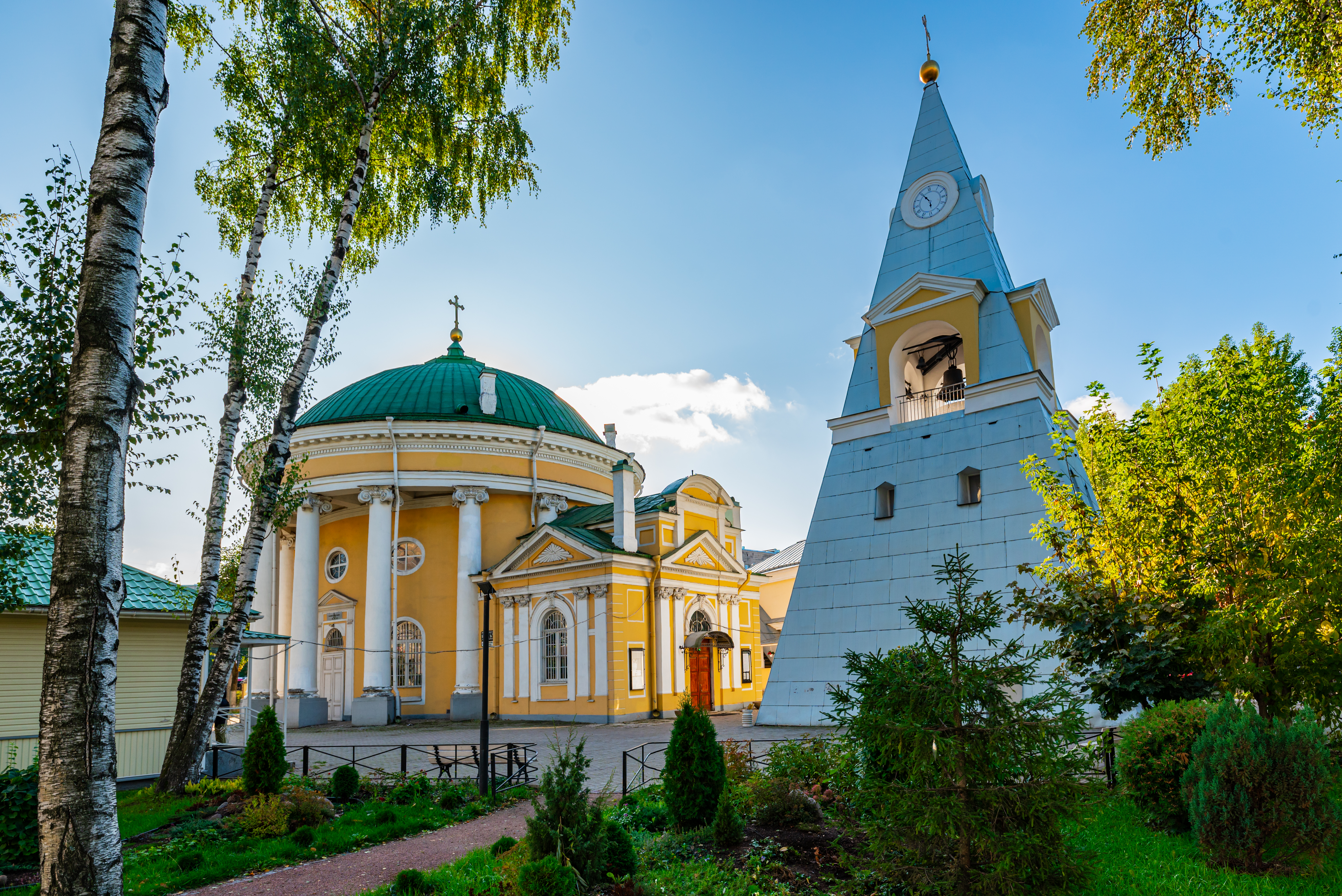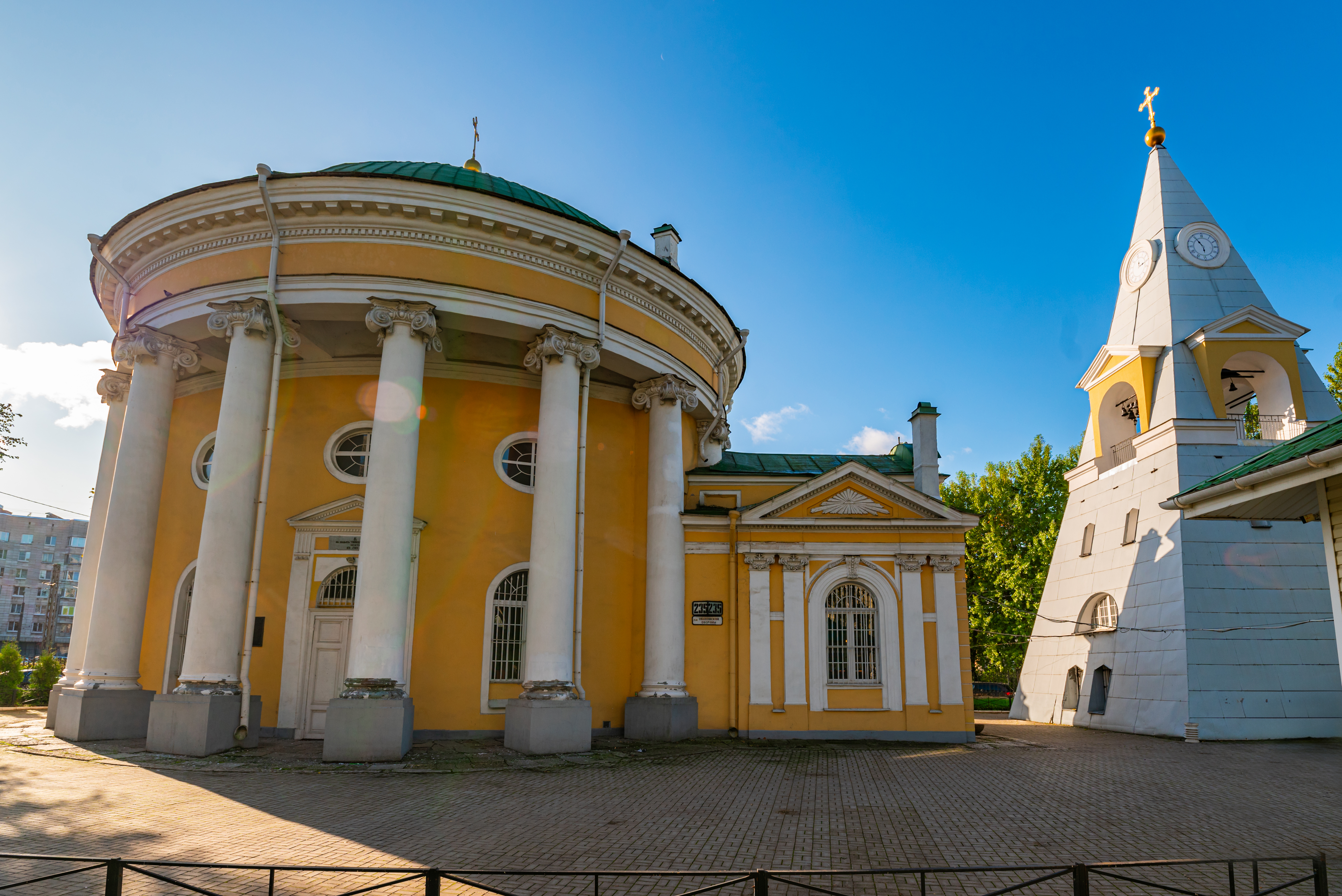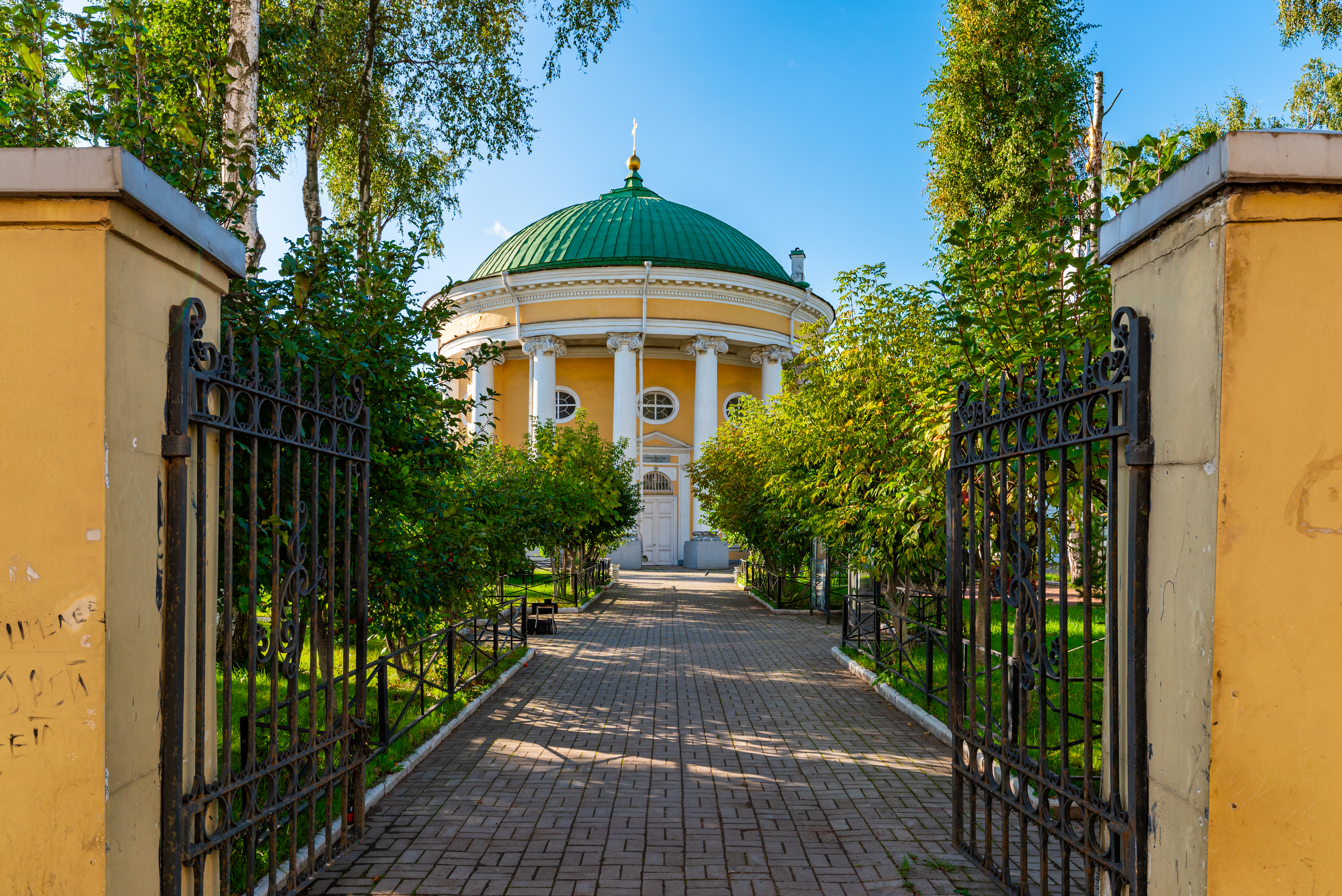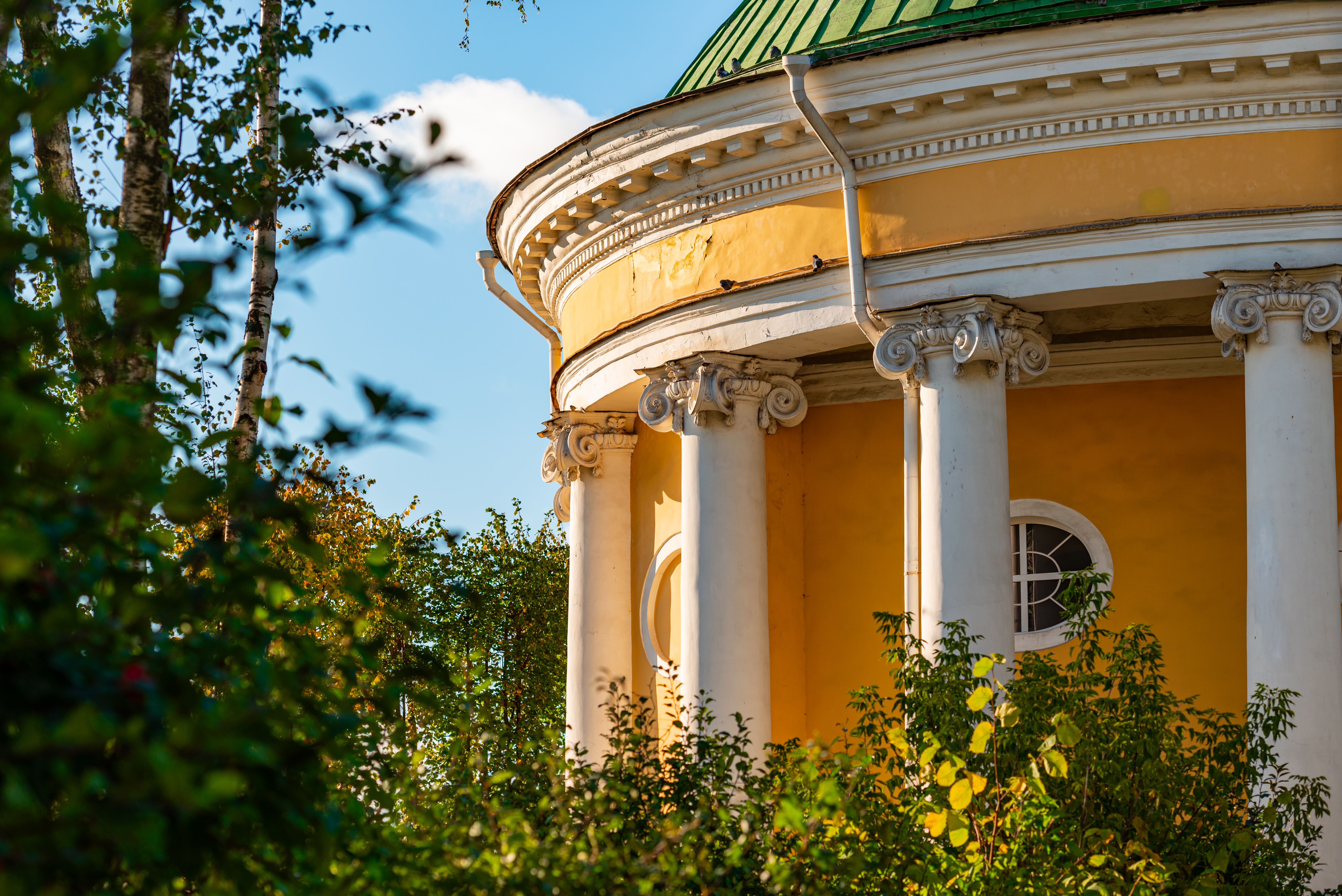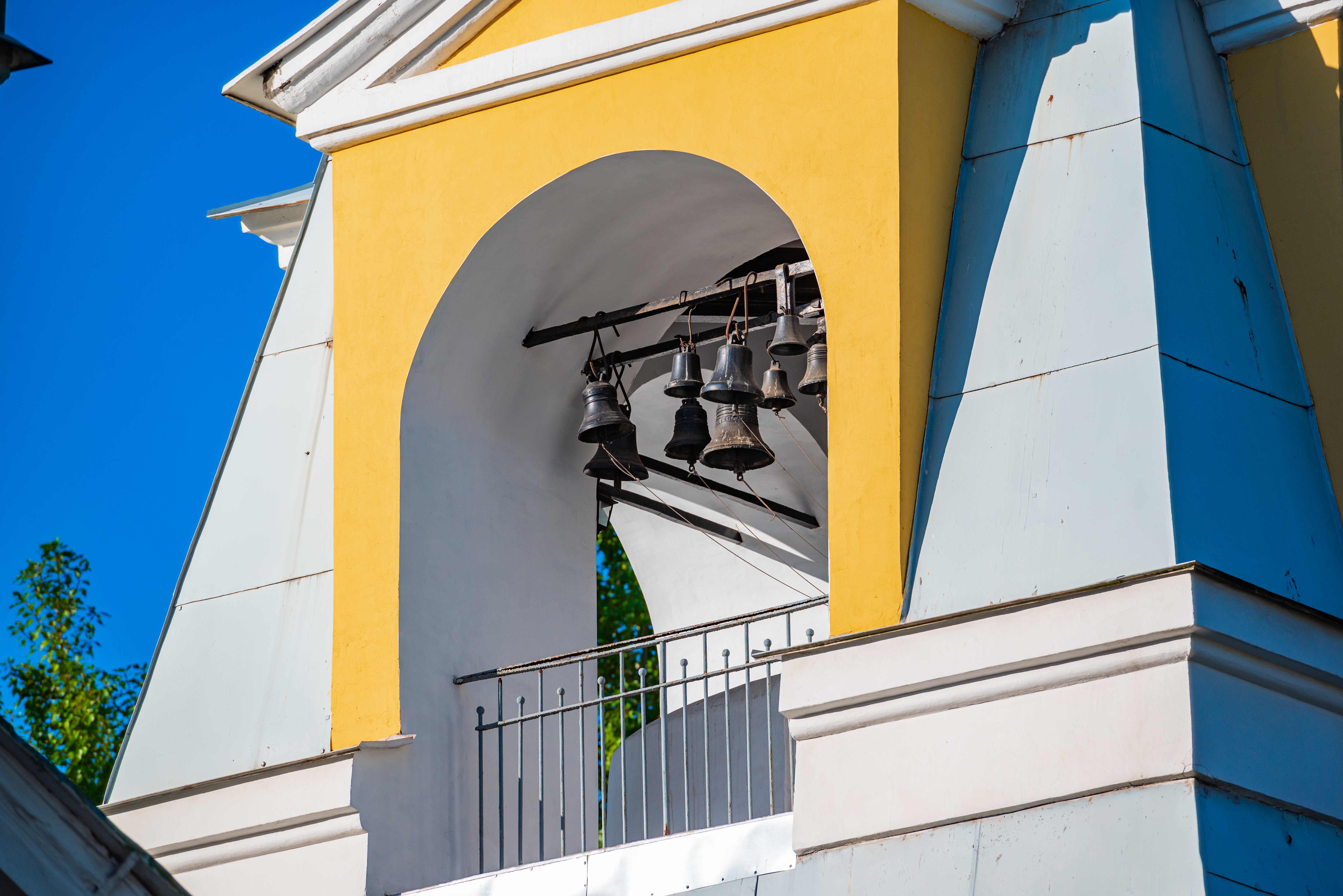 Back
Back
St. Life-Giving Trinity Church "Easter Cake and Pudding"

St. Petersburg, pr. Obukhovskoy Oborony, 235
The Church is imitating the Easter cake, and the bell tower imitating paskha (a Russian dessert made from curd or cream and traditionally served at Easter)
The idea is to give the building the shape of an Easter cake does not belong to the architect and contractor to Prosecutor General A. A. Vyazemsky, owner of the village of Aleksandrovskoe, the place of erection of the Church.
Trinity Church was built in 1785-1790 in the style of Russian classicism. The full name is the Church of the Holy Trinity of the Life-Giving also known as " Kulich and Paskha ", which was given to it by architectural decision - the ensemble of the church is made in the form of Easter dishes - Easter cake and paskha. The idea to give the building this shapes doesn't belong to the architect but to the construction project owner, Prosecutor General A. A. Vyazemsky, the owner of the village of Aleksandrovskoye, the place of erection of the church.
The church, imitating Easter cake, is a rotunda with a colonnade of 16 columns of the Ionic order supporting the entablature. It is crowned with a low dome without a dome drum. The outer walls are painted in a yellowish-brown “Petersburg” color, the dome is green. In the interior, the walls of the round hall are painted blue and decorated with pilasters of the Corinthian order, above the altar apse there are figures of soaring angels.
The bell loft imitating paskha is a tetrahedral pyramid, covered with metal sheets and divided into two tiers. In the lower tier is the baptistery, in the upper tier there is a bell turret with bells. The dome is crowned with an apple with a cross. Despite all its originality, the church, built as a manor, was inconvenient for a public divine worship as a parish. To increase the area of the church in 1858, a antechurch was added to the entrance, and a tambour to the altar.
The church was one of the few ones in Leningrad that operated for a long time in Soviet times. October 10, 1937, its rector Archpriest Leonid Dyakonov was arrested and shot. In March 1938, the church was closed and began to be used as a club.
At the same time, all her decoration was destroyed; including the icon of the Holy Trinity, which was for many years the main holy thing of the church. In 1946, the church reopened for worship. The ceremonial consecration of the church was performed on June 1 by Metropolit Grigory (Chukov) of Leningrad and Novgorod. All the shrines stored in the church were collected from other churches.
Currently, the temple houses a particularly revered image of the Mother of God “Joy of All Who Sorrow,” which was transferred June 14, 1946 from the Transfiguration Cathedral.
On March 1, 2010, Sberbank of Russia issued a 3 ruble commemorative coin depicting the Church of the Holy Trinity ("Kulich and Paskha") in the series "Monuments of Russian Architecture". The coin is made of 925 sterling silver with a circulation of 10,000 copies and a weight of 31.1 grams.
In 2011, the church house was built on the second floor, built 20 years earlier on the place of a wooden barn.


